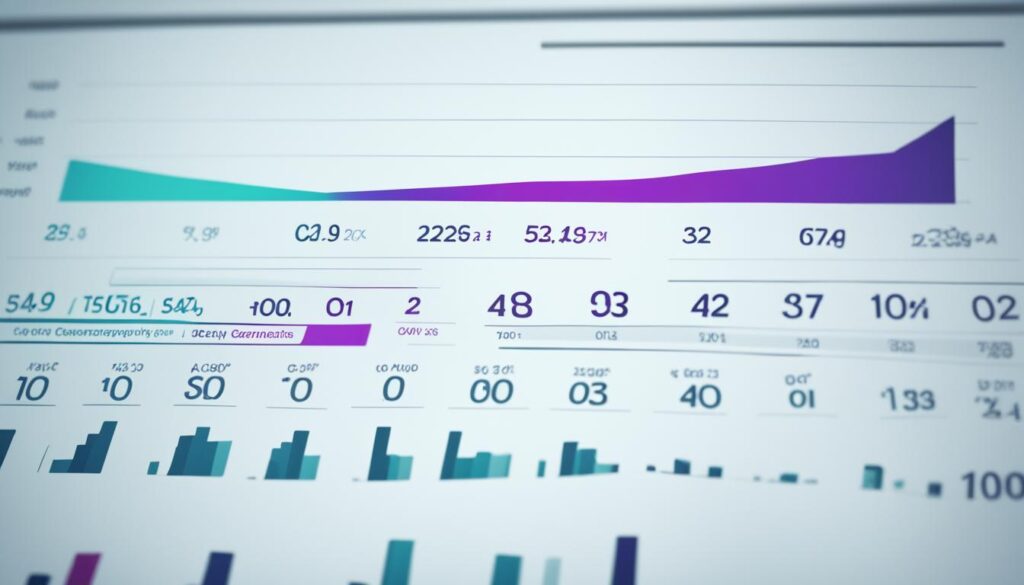Inventory management software helps businesses keep track of stock from start to finish. It makes things more efficient and keeps costs down. This guide looks at different systems for managing inventory well.
It covers everything from simple spreadsheets to complex software. Each system aims to make supply chains smoother and financial reports more accurate. For businesses in South Africa, these tools are key to avoiding too much or too little stock. This helps keep cash flow healthy and supports growth.
Explaining what is Inventory Management Software and looking at different types is important. This includes everything from basic spreadsheets to stock control software like Unleashed. Businesses need to think about the cost, which is about USD $255 a month for each user, including support.
Using advanced systems like Track It All can make things run smoother. It works well with other tools and lets you track things in real-time from anywhere. By using smart strategies like Just-in-Time and drop shipping, businesses can cut costs from stock issues.
Key Takeaways
- Inventory management software is key for tracking and controlling stock well.
- There are many options, from simple spreadsheets to complex software.
- Prices vary, but good packages can make things much more efficient.
- South African companies can really benefit from tools like Track It All.
- Advanced systems support strategies like Just-in-Time and drop shipping.
What is Inventory Management Software?
Inventory management software helps track goods from start to finish, covering buying, making, and selling. It’s all about making sure businesses have the right stock levels. This software also gives insights into how profitable a business is. Inventory management software benefits businesses by allowing them to streamline their operations, reduce human error, and optimize their inventory levels. By providing real-time data and analytics, this software empowers businesses to make informed decisions and respond quickly to changing market demands. Ultimately, inventory management software helps businesses increase efficiency, profitability, and customer satisfaction.
Definition and Basic Concepts
This software is an inventory tracking solution. It lets businesses keep an eye on stock levels and where they are. With it, companies can manage their stock better and avoid running out or having too much stock. Tools like Zoho Inventory offer features for tracking sales across different platforms and managing suppliers.
Benefits of Inventory Management Software
Using this software has many benefits:
- It saves money by cutting down on mistakes and overstocking.
- It automates reordering for seasonal items.
- It makes work more efficient with detailed sales reports.
- It lets you track inventory and scan barcodes with a mobile app.
- It gives real-time updates and automates inventory control.

Types of Inventory Management Systems
There are different types of systems for managing inventory, depending on what they do and how big they are. They include:
- Basic spreadsheet systems: Good for small operations with simple inventory needs.
- Cloud-based solutions: These are cost-effective and scalable, priced from $100 to $3,000 a month.
- Advanced automated software: Works well with other business tools, covering things like POS systems and online shops.
Choosing the right inventory management software is key to being efficient and successful in business, whether you’re a retailer or a manufacturer.
Implementing Inventory Management Software
Getting inventory management software to work well needs a careful plan. It’s about fitting the software into a company’s unique needs. This means following steps that make sure the software fits in well and boosts efficiency, especially for South African businesses. We’ll look at how to deploy it smoothly and see how Track It All, a South African company, did it.

Steps to Successful Implementation
Putting in inventory management software is more than just installing it. We must plan carefully to improve our inventory management and get the best results. Here’s a step-by-step guide to make sure we hit our goals:
- Understand Customer Needs: Start by figuring out what customers need. This helps us customise the software for them. It’s important to talk clearly at this stage.
- Customer Onboarding: A good onboarding process helps customers learn about the software’s features. Training and resources are key here.
- Customise the Software: Adjust the software to fit our processes. This makes it more relevant and easy to use.
- Data Migration: Move data over carefully to avoid problems. Keeping data safe during this step is crucial for smooth operations.
- Pilot Testing: Try the software with a few users first and listen to their feedback. Use this feedback to fix any issues before rolling it out fully.
- Ongoing Support: Keep supporting users after the software is in place. This helps with user satisfaction and how quickly they start using it.
For more tips on getting inventory management systems to work, check out this guide.
Case Study: Track It All
Track It All, a South African company, shows how good implementation can change things for the better. They chose a strong inventory management software that met their tracking needs.
With a great onboarding process and careful data move, Track It All boosted their asset management and reporting. The software made reporting automatic and tracking material receipts better. This led to better business efficiency, showing the power of a thoughtful and customer-focused approach.
This example highlights the importance of picking the right inventory management software. It also shows how key onboarding and data safety are. By focusing on these, businesses can make their operations more efficient and productive.
Conclusion
Using inventory management software is key for businesses in South Africa. It helps them manage stock well, meeting customer needs quickly and accurately. This software uses real-time data and automation to make managing inventory easy and efficient.
In today’s market, having the right inventory system is crucial. For e-commerce, it cuts deadstock by 25% and boosts sales by 20%. Multi-channel retailers see a 30% revenue increase. Efficiency leads to cost savings, cutting overstocking by 15% and improving inventory tracking by 20%.
In South Africa, using advanced inventory methods and systems can cut stock wastage by 10%. Tools like barcode scanners make managing stock 30% faster. This leads to smoother operations and better efficiency. An efficient system also means happier customers, with a 20% increase in repeat buys.
In conclusion, investing in advanced inventory management is a smart move. Track It All shows how technology can improve workflow, provide valuable data, and cut costs. For South African businesses, using tailored inventory software is vital for staying competitive and successful.







